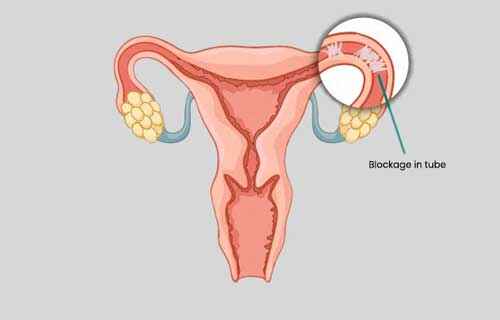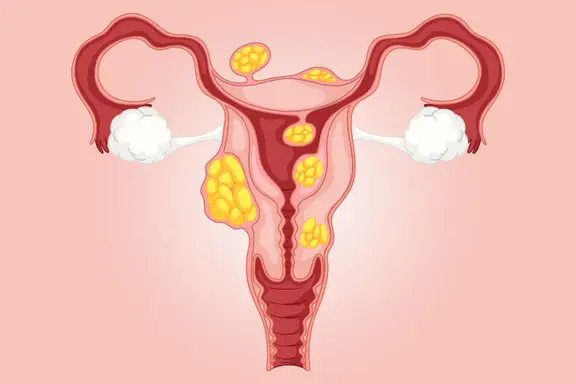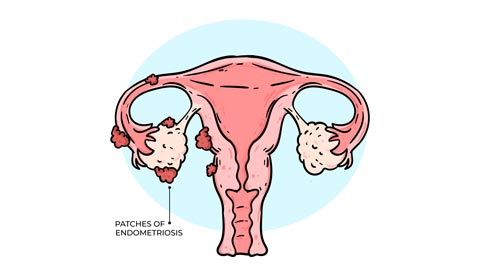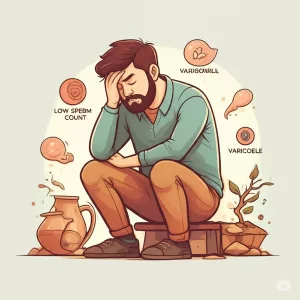
Male infertility
Male infertility is often hidden in discussions around reproductive health, yet it plays an equally vital role in the journey to parenthood. For many men, discovering fertility challenges can be difficult to talk about. Societal expectations around masculinity, performance, and silence can make it harder to seek support.
But you’re not alone. Millions of men across the world face fertility related hurdles! many of which are treatable and manageable with the right techniques like Yoga. Beyond flexibility, yoga offers powerful benefits for hormonal balance, mental health, and reproductive function. This post explores male fertility challenges in depth and how a holistic approach, including yoga excercises can support healing.
Understanding Male Infertility :
Male fertility revolves around one central biological function: the ability to produce healthy, motile sperm in sufficient numbers to fertilize an egg. But this function is influenced by multiple factors both physical and emotional. Understanding these can help us recognize where things may go off track.
Low Sperm Count (Oligozoospermia)
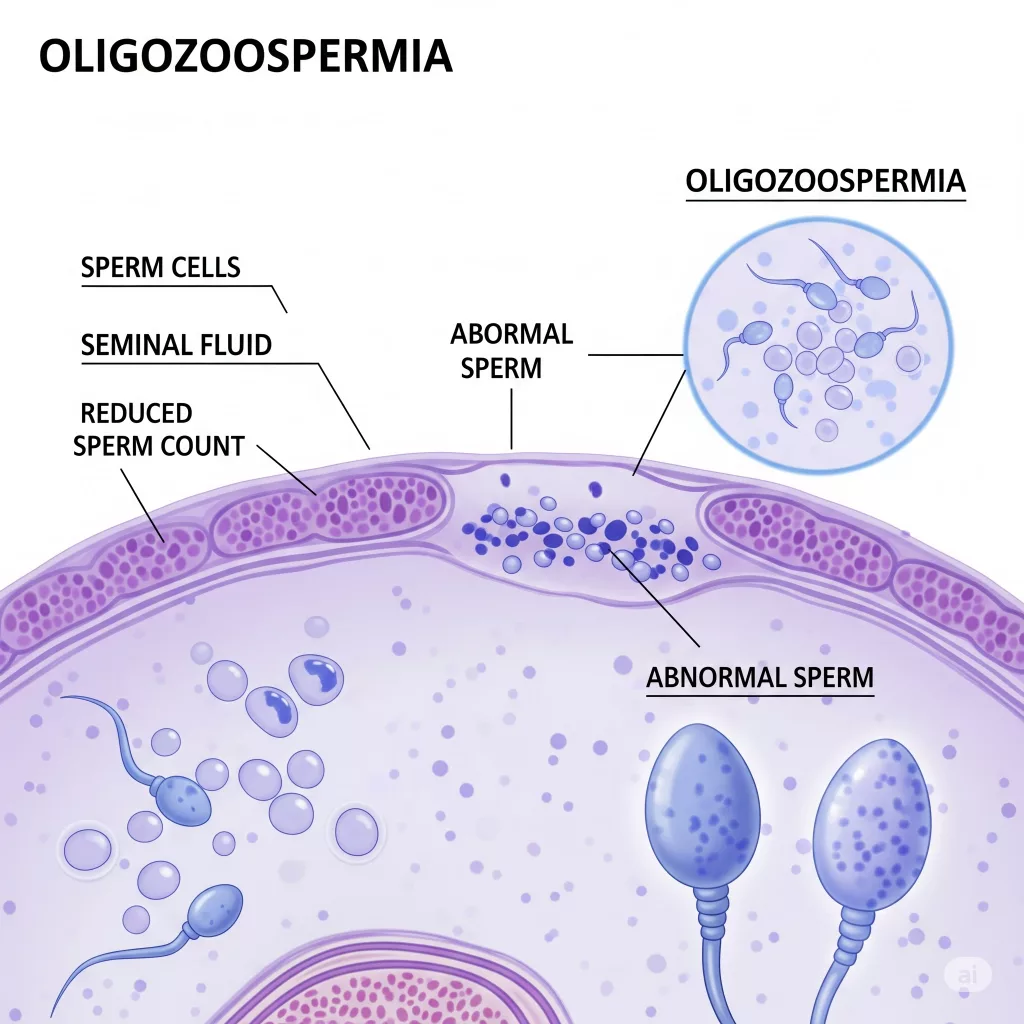
Low sperm count, medically termed oligozoospermia, refers to having fewer sperm than normal in a semen sample. According to the World Health Organization, a healthy sperm count should be at least 15 million sperm per milliliter of semen. Anything below this threshold can reduce the chance of natural conception.
What causes low sperm count?
- Hormonal imbalances (especially low testosterone or pituitary hormone dysfunction)
- Undescended testicles
- Varicocele (enlarged veins in the scrotum)
- Infections like mumps orchitis
- Chronic illness or long-term medications
- Environmental toxins or excessive heat (e.g., saunas, laptops on lap)
Despite being common, oligozoospermia can be improved through treatment, lifestyle changes, and supportive practices like yoga and diet adjustments.
Poor Sperm Motility (Asthenozoospermia)
Sperm motility is the ability of sperm to swim forward efficiently. Healthy sperm need to be strong swimmers to reach and fertilize the egg in the fallopian tube.
In asthenozoospermia, the sperm may be alive but move sluggishly or in circles, reducing the chances of natural conception.
Possible causes:
- Infections or inflammation in the male reproductive tract
- Oxidative stress damaging sperm tails
- Nutritional deficiencies (like low zinc, selenium)
- Smoking or alcohol use
- Excessive heat or prolonged fever
Improving motility involves reducing oxidative stress, eating a nutrient-rich diet, and adopting practices like yoga that reduce inflammation and improve circulation.
Abnormal Sperm Morphology (Teratozoospermia)
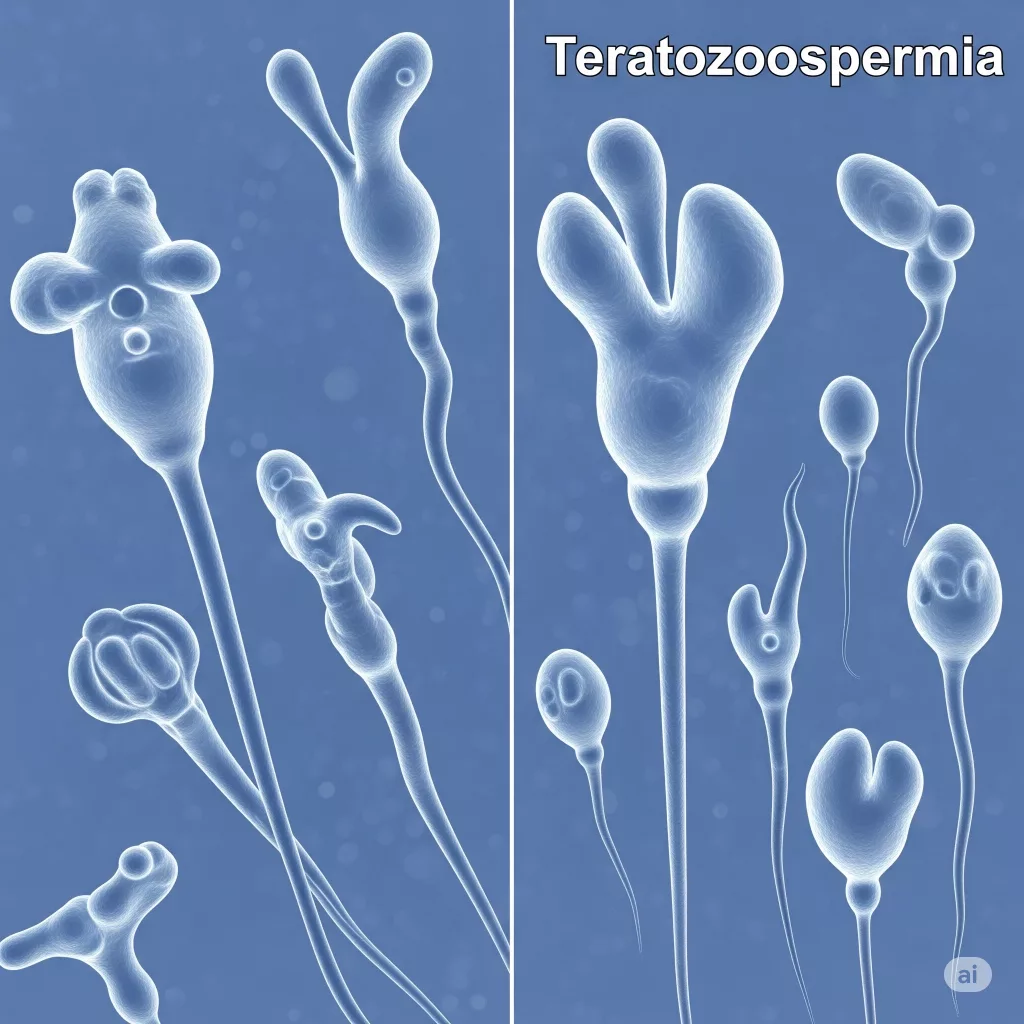
Morphology refers to the shape and structure of the sperm. Ideally, sperm should have an oval head and a long, straight tail.
When the shape is abnormal, such as a large head, double tail, or kinked structure it can interfere with the sperm’s ability to penetrate the egg.
What affects sperm morphology?
- Genetic abnormalities
- High testicular temperature
- Exposure to toxic chemicals or radiation
- Chronic illness (like diabetes)
- Lifestyle habits (smoking, drinking, stress)
While perfect morphology isn’t essential for conception (some abnormally shaped sperm can still fertilize an egg), higher rates of normal-shaped sperm do increase chances.
Azoospermia (Absence of Sperm in Semen)
Azoospermia is a condition where no sperm are found in the ejaculate. It’s detected only through semen analysis.
There are two types:
- Obstructive azoospermia: Caused by a blockage in the vas deferens or epididymis (due to injury, infection, or vasectomy).
- Non-obstructive azoospermia: The testicles are unable to produce sperm—this could be due to genetic conditions, hormone deficiencies, or testicular failure.
How is it treated?
- Surgical sperm retrieval for use in IVF (for obstructive types)
- Hormone therapy if there’s an endocrine imbalance
- Lifestyle changes, antioxidants, or sometimes assisted reproductive techniques
Diagnosis can be emotionally difficult, but it’s important to remember that azoospermia doesn’t necessarily mean parenthood is out of reach.
Hormonal Imbalances
Fertility in men is tightly regulated by hormones:
- GnRH (Gonadotropin-releasing hormone) from the brain
- LH and FSH from the pituitary gland
- Testosterone from the testes
If any part of this hormonal axis is disrupted, sperm production can be affected. For example:
- Low LH or FSH = Poor sperm production
- High prolactin = Suppresses testosterone
- Low testosterone = Reduced sperm production, energy, libido
What causes Hormonal Imbalances?
- Pituitary tumors or dysfunction
- Stress
- Steroid use
- Obesity (increases estrogen levels)
- Chronic diseases like thyroid disorders
Yoga can help regulate the endocrine system, especially when paired with professional medical care.
Varicocele
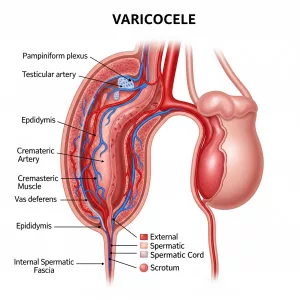
A varicocele is an enlargement of the veins within the scrotum (similar to varicose veins in the legs). It increases the temperature of the testicles, which can damage sperm production and quality.
It is one of the most common and correctable causes of male infertility, seen in nearly 15% of all men and up to 40% of infertile men.
Symptoms may include:
- Dull testicular pain
- Noticeable swelling or vein patterns
- Low sperm count or motility
Varicoceles can often be surgically corrected or managed with supportive therapies like yoga, which reduces pelvic tension and improves blood flow.
Infections
Certain infections can affect sperm production or block the passage of sperm:
- Mumps orchitis (especially in teenage years)
- Chlamydia, gonorrhea
- Prostatitis (inflammation of the prostate)
- UTIs
Infections may cause inflammation, scarring, or immune system attacks on sperm (antisperm antibodies). Many of these can be treated with antibiotics, anti-inflammatory medication, and stress reduction practices.
Ejaculation Disorders
Ejaculation issues can prevent sperm from being properly delivered to the female partner.
Common disorders:
- Retrograde ejaculation: Semen flows backward into the bladder.
- Delayed ejaculation: Difficulty achieving climax.
- Premature ejaculation: Ejaculation occurs too quickly.
These issues may stem from:
- Diabetes or nerve damage
- Surgeries (e.g., prostate or bladder)
- Psychological factors (anxiety, trauma)
- Medication side effects
Gentle yoga and breathwork can support nervous system regulation and help manage anxiety-related disorders.
Lifestyle and Environmental Factors
Daily habits have a profound impact on male fertility. Key risk factors include:
- Smoking: Reduces sperm count and motility.
- Excessive alcohol: Affects testosterone and sperm shape.
- Obesity: Alters hormones and increases heat in the scrotum.
- Sedentary life: Reduces circulation and testosterone.
- Pesticides, heavy metals, and plastics (like BPA): Hormone disruptors.
Addressing these lifestyle elements is foundational in any holistic fertility plan.
Checkout Yoga Course to Heal for Male Infertility :-

Symptoms of Male Infertility
Male infertility often presents no obvious signs, and many men only discover the issue during routine fertility testing. Still, some symptoms can act as early warning signs.
Problems with Sexual Function
Erectile Dysfunction (ED):
Difficulty maintaining or achieving an erection can stem from:
- Circulatory issues
- Psychological stress or performance anxiety
- Diabetes or nerve damage
- Low testosterone
Low Libido:
Decreased interest in sex is often related to hormonal imbalances or emotional stress.
Ejaculation Issues:
Including pain during ejaculation, low volume, or absence of semen, these issues may suggest blockages or hormonal disorders.
Pain, Swelling, or Discomfort in Testicles or Scrotum
Any swelling, tenderness, or visible abnormalities may indicate a varicocele, infection, or cyst and should be examined by a specialist.
Hormonal Imbalance Symptoms
- Fatigue
- Loss of muscle mass
- Mood changes or depression
- Loss of body or facial hair
- Development of breast tissue (gynecomastia)
Abnormal Semen Characteristics
- Watery consistency
- Low ejaculate volume
- Unusual color or odor
- Presence of blood (hematospermia)
These symptoms can point to infections, blockages, or prostate issues.
Erectile Dysfunction (ED) and Fertility
ED does not directly cause infertility, but it can prevent successful intercourse, making conception difficult. It is also an emotional issue, often tied to self-image and confidence.
Causes of ED include:
- Poor blood flow (cardiovascular issues)
- Diabetes or hypertension
- Stress, anxiety and migrane
- Hormonal deficiency (low testosterone)
- Side effects from medications or drug use
Yoga offers gentle physical movement, breath control, and emotional release that together help manage many underlying causes of ED, particularly stress and anxiety.
Stress Affects Male Infertility
The mind-body connection is real and nowhere is it more evident than in fertility. Stress triggers the release of cortisol, a hormone that, when chronically elevated, disrupts the delicate balance of reproductive hormones like testosterone, luteinizing hormone (LH), and follicle-stimulating hormone (FSH). These hormones are essential for sperm production.
Furthermore, psychological distress can lead to behavioral shifts like poor diet, smoking, drinking, or lack of exercise—which further deteriorate sperm quality. It becomes a vicious cycle.
Yoga’s ability to calm the nervous system and bring mental clarity can act as a buffer against this storm of stress, offering a grounded sense of emotional control.
How can Yoga Heal Male Infertility
Yoga isn’t just about postures. It’s a full-spectrum approach to wellness, blending movement, breath, mindfulness, and lifestyle discipline. Here’s how it supports male fertility:
- Regulates Hormonal Balance: Yoga influences the hypothalamic pituitary gonadal axis, a system that regulates testosterone and sperm production.
- Improves Circulation: Specific postures improve blood flow to the pelvic region and reproductive organs, ensuring nourishment and oxygenation.
- Reduces Stress: Yoga activates the parasympathetic nervous system the “rest and digest” mode which reduces cortisol and supports sperm health.
- Enhances Sleep: Poor sleep is a known disruptor of testosterone levels. Yoga helps improve sleep quality.
- Encourages Mindful Living: Through yoga, men learn to listen to their bodies and align with natural rhythms.
It’s not about pushing harder, but rather softening into balance.
Yoga Excercises to Cure Male Infertility
Regular practice of certain yoga excercises can have profound effects on reproductive health. These excercises help stimulate the endocrine system, release tension, and support overall vitality.
Paschimottanasana (Seated Forward Bend)
Improves blood circulation to the pelvic region.
Bhujangasana (Cobra Pose)
Stimulates abdominal organs and increases blood flow to the testes.
Viparita Karani (Legs-Up-the-Wall Pose)
Gently drains excess fluid from the legs and improves circulation.
Setu Bandhasana (Bridge Pose)
Stimulates pelvic organs and regulates thyroid function (which impacts hormone balance).
Balasana (Child’s Pose)
A restorative pose that releases stress and encourages mental stillness.
Baddha Konasana (Bound Angle Pose)
Opens up the hips and increases blood flow in the groin.
Utkatasana (Chair Pose)
Builds lower body strength and stamina.
Breathwork (Pranayama) for Healing Male Infertility
Breath is a bridge between the body and the mind. Yogic breathing techniques, known as pranayama, are especially effective in managing stress and restoring endocrine harmony.
Nadi Shodhana (Alternate Nostril Breathing)
Calms the nervous system and harmonises the two hemispheres of the brain. Supports emotional balance and hormone regulation.
Bhramari (Bee Breath)
Soothes anxiety, improves focus, and stimulates the pineal and pituitary glands—both central to hormonal function.
Dirgha Shwas (Three-Part Breath)
Teaches the body to breathe fully and deeply, enhancing oxygen flow to all systems.
A few minutes of these techniques daily can have a noticeable impact on mental clarity, sleep quality, and emotional equilibrium all of which contribute to better fertility outcomes.
Supportive Lifestyle Shifts Inspired by Yogic Principles
Yoga is a way of life. These complementary lifestyle shifts can reinforce the benefits of a yoga practice:
- Nutrition: Eat fresh, seasonal, and whole foods. Favor zinc-rich foods (pumpkin seeds, lentils), antioxidants (berries, spinach), and omega-3s (flaxseeds, walnuts).
- Routine: Consistency in waking, eating, and sleeping aligns the body’s natural rhythms.
- Sleep: Aim for 7–8 hours of restful sleep per night to maintain healthy testosterone levels.
- Avoid Toxins: Minimize plastic use, processed food, and chemical-laden products.
- Connection: Seek emotional support from loved ones or professionals. Fertility struggles are heavy—it’s okay to ask for help.
Integrating Yoga with Medical Support: A Balanced Path
While yoga is immensely supportive, it’s crucial to remember that it is complementary to not a replacement for medical treatment. Men experiencing:
- Very low sperm counts
- Azoospermia
- Hormonal issues
- Unexplained infertility
should consult a reproductive endocrinologist or urologist. Medical interventions such as hormone therapy, assisted reproductive technology (ART), or surgical procedures may be necessary.
Yoga helps you stay emotionally grounded, improves treatment outcomes, and offers a path to inner peace during what can be an uncertain time.
Yoga Heals Male Infertility Issues from Roots
Male fertility struggles deserve understanding, respect, and care. Yoga offers more than postures it offers space to breathe, to heal, and to reconnect with your body. Whether used alone or alongside medical treatment, yoga invites men into a healing journey that honors both the science and soul of fertility.
You are not alone and there is a path forward!
A Yog4Lyf’s Holistic Approach via :- Yog4Lyf App
In our app you will get
Live Classes: Morning and evening sessions for all fitness levels.
Diet Plans: Nutrition guides to complement yoga practice.
Community Support: Forums to share experiences and victories.









